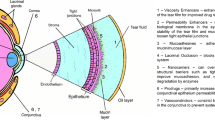Abstract
Purpose
About 70% of eye drops contain benzalkonium chloride (BAK) to maintain sterility. BAK is an effective preservative but it can cause irritation and toxicity. We propose to mitigate ocular toxicity without compromising sterility by incorporating a filter into an eye drop bottle to selectively remove BAK during the process of drop instillation.
Methods
The filter is a packed bed of particles made from poly(2-hydroxyethyl methacrylate) (pHEMA), which is a common ophthalmic material. We showed that pHEMA particle prepared by using ethoxylated trimethylolpropane triacrylate as crosslinker can be incorporated into a modified eyedrop bottle tip to selectively remove the preservative as the formulation is squeezed out of the bottle. Hydraulic permeability of the plug is measured to determine the resistance to eye drop squeezing, and % removal of BAK and drugs are determined.
Results
The modified tip has a hydraulic permeability of about 2 Darcy, which allows eyedrops formulations to flow through without excessive resistance. The tip is designed such that the patients can create an eyedrop of solution of 1–10 cP viscosity in 4 s with a nominal pressure. During this short contact time, the packed particles removed nearly 100% of benzalkonium chloride (BAK) from a 15 mL, 0.012% BAK solution but have only minimal impact on the concentration of contained active components.
Conclusion
Our novel design can eliminate the preservative induced toxicity from eye drops thereby impacting hundreds of millions of patients with chronic ophthalmic diseases like glaucoma and dry eyes.





Similar content being viewed by others
Abbreviations
- ∆P :
-
Pressure drop across the bed
- A :
-
Cross-sectional area of the bed
- BAK:
-
Benzalkonium chloride
- CMC:
-
Carboxymethyl cellulose
- Da:
-
Darcy (=0.9869233 (μm)2)
- H :
-
Length of the packed bed
- HEMA:
-
2-hydroxyethyl methacrylate
- k :
-
Hydraulic permeability of the packed bed
- pHEMA:
-
Poly (hydroxyethyl methacrylate)
- SR454HP:
-
Ethoxylated (3) trimethylolpropane triacrylate
- SR9035:
-
Ethoxylated (15) trimethylolpropane triacrylate
- UVB:
-
Ultraviolet B (280–315 nm)
- μ :
-
Fluid viscosity
References
Wilson LA. To preserve or not to preserve, is that the question? Br J Ophthalmol. 1996;80:583–4.
Kim MS, Choi CY, Kim JM, Chung H, Woo H. Microbial contamination of multiply used preservative-free artificial tears packed in reclosable containers. Br J Ophthalmol. 2008;92:1518–21.
Baudouin C, Labbé A, Liang H, Pauly A, Brignole-Baudouin F. Preservatives in eyedrops: the good, the bad and the ugly. Prog Retin Eye Res. 2010;29:312–34.
Baudouin C. Detrimental effect of preservatives in eyedrops: implications for the treatment of glaucoma. Acta Ophthalmol. 2008;86:716–26.
Jaenen N, Baudouin C, Pouliquen P, Manni G, Figueiredo A, Zeyen T. Ocular symptoms and signs with preserved and preservative-free glaucoma medications. Eur J Ophthalmol. 2007;17:341–9.
Ishibashi T, Yokoi N, Kinoshita S. Comparison of the short-term effects on the human corneal surface of topical timolol maleate with and without benzalkonium chloride. J Glaucoma. 2003;12:486–90.
Baudouin C, de Lunardo C. Short term comparative study of topical 2% carteolol with and without benzalkonium chloride in healthy volunteers. Br J Ophthalmol. 1998;82:39–42.
Rolando M, Brezzo V, Giordano G, Campagna P, Burlando S, Calabria G. The effect of different benzalkonium chloride concentrations on human normal ocular surface. In: Van Bijsterveld O, Lemp M, Spinelli D, editors. The Lacrimal System. Amsterdam, Berkely, Milano: Kugler and Ghedini Publications; 1991. p. 87–91.
Nuzzi R, Finazzo C, Vercelli A, Cracco C. Conjunctiva and subconjunctival tissue in primary open-angle glaucoma after long-term topical treatment: an immunohistochemical and ultrastructural study. Graefes Arch Clin Exp Ophthalmol. 1995;233:154–62.
Cogger JJ, Haffner DS. Multiple precision dose, preservative-free medication delivery system. US6254579B1, 2001.
Haffner DS, Myall PA, Evans B. Twist housing apparatus for instilling a medication into an eye. US6533764B1, 2003.
Boyles JV, Kent JS. Storage and delivery of multi-dose, preservative-free pharmaceuticals. US6450994B1, 2002.
Cogger JJ. Housing apparatus with rear activated return button for instilling a medication into an eye. US6524287B1, 2003.
Malet F, Karsenti D, Pouliquen P. Preservative-free ocular hydrating agents in symptomatic contact lens wearers: saline versus PVP solution. Eye Contact Lens. 2003;29:38–43.
Teping C, Wiedemann B. The COMOD system. A preservative-free multidose container for eyedrops. Klin Monatsbl Augenheilkd. 1994;205:210–7.
Hsu K-H, Chauhan A. Rapid and selective removal of preservative from ophthalmic formulations during eye drop instillation. Eur J Pharm Biopharm. 2015;97:30–8.
Kim J, Chauhan A. Dexamethasone transport and ocular delivery from poly(hydroxyethyl methacrylate) gels. Int J Pharm. 2008;353:205–22.
Hsu K-H, Carbia BE, Plummer C, Chauhan A. Dual Drug Delivery from Vitamin E loaded contact lenses for glaucoma therapy. Eur J Pharm Biopharm. 2015;94:312–21.
Horak D, Chaykivskyy O. Poly(2-Hydroxyethyl Methacrylate-coN,O-Dimethacryloylhydroxylamine) particles by dispersion polymerization. J Polym Sci A Polym Chem. 2002;40:1625–32.
Takahashi K, Miyamori S, Uyama H, Kobayashi S. Preparation of micron-size monodisperse poly(2-hydroxyethyl methacrylate) particles by dispersion polymerization. J Polym Sci A Polym Chem. 1996;34:175–82.
Horak D, Svec F, Kalal J, et al. Hydrogels in endovascular embolization. I. Spherical particles of poly(2-hydroxyethyl methacrylate) and their medicobiological properties. Biomaterials. 1986;7:188–92.
I. Brenntag Specialties. AQUALON® Sodium Carboxymethylcellulose Physical and Chemical Properties. In http://www.brenntagspecialties.com/en/downloads/Products/Multi_Market_Principals/Aqualon/Aqualon_CMC_Booklet.pdf, 1999.
ACKNOWLEDGMENTS AND DISCLOSURES
The work reported here is a part of a pending utility patent which is licensed to TearClear.
Author information
Authors and Affiliations
Corresponding author
Rights and permissions
About this article
Cite this article
Hsu, KH., Gupta, K., Nayaka, H. et al. Multidose Preservative Free Eyedrops by Selective Removal of Benzalkonium Chloride from Ocular Formulations. Pharm Res 34, 2862–2872 (2017). https://doi.org/10.1007/s11095-017-2270-8
Received:
Accepted:
Published:
Issue Date:
DOI: https://doi.org/10.1007/s11095-017-2270-8




